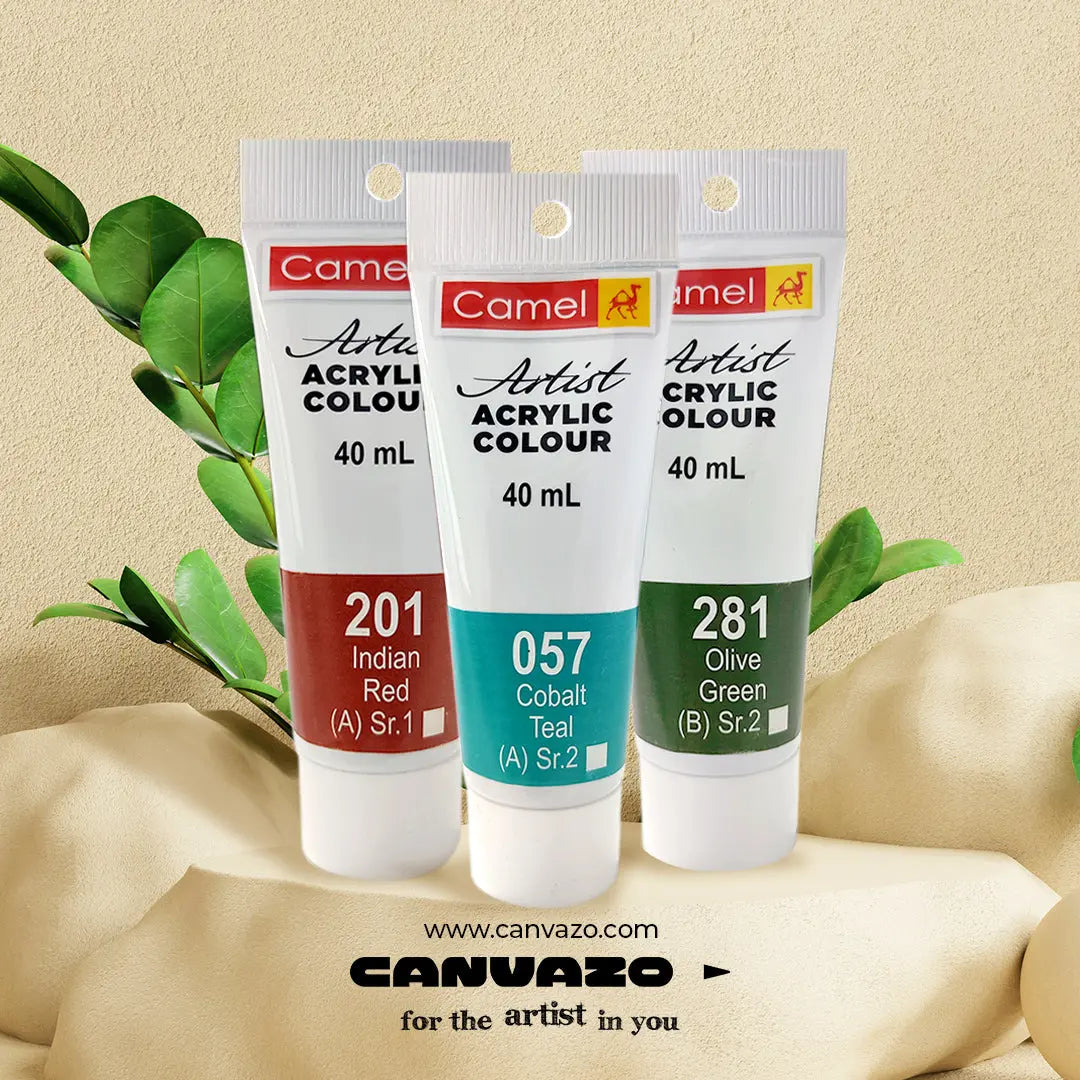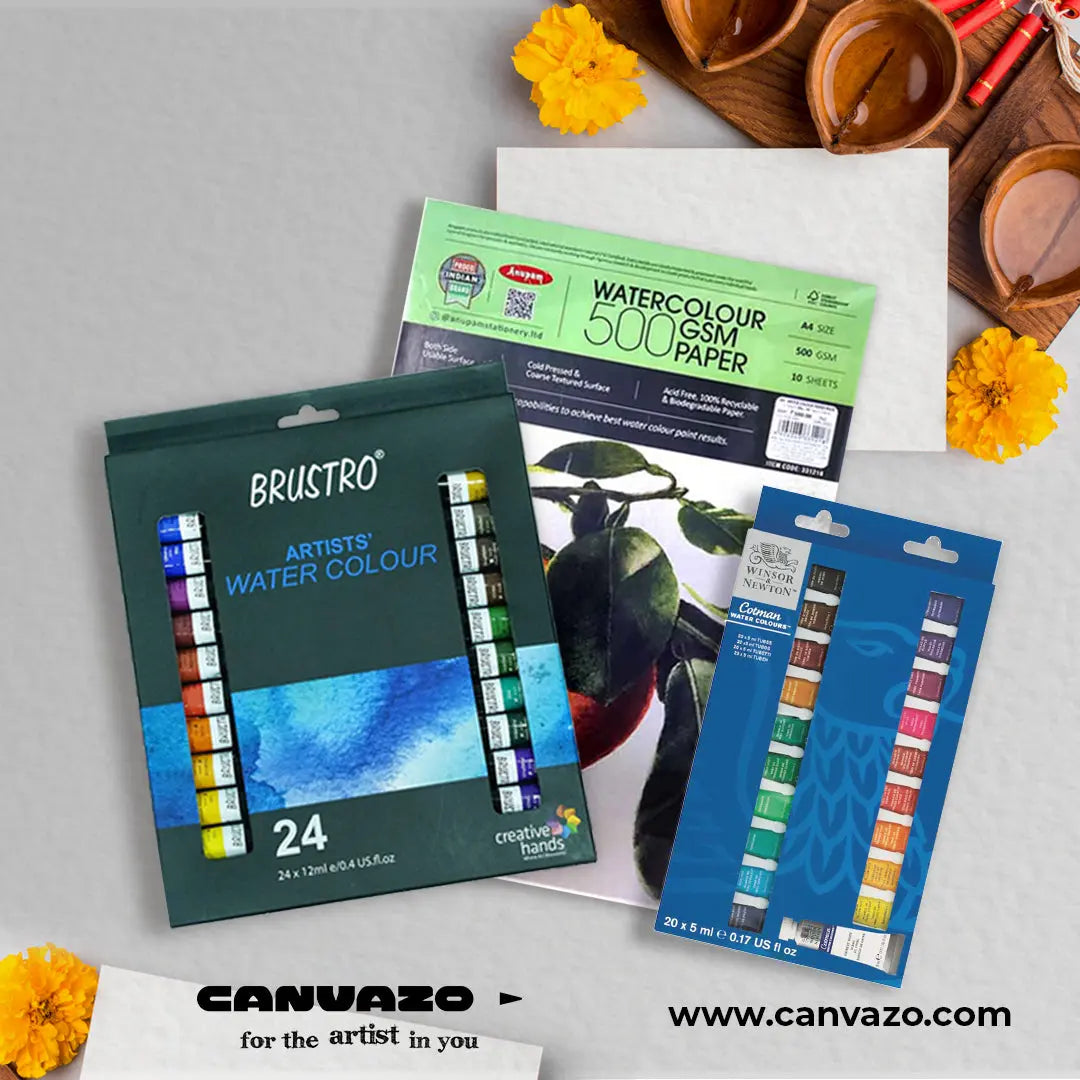Experimental Techniques and Unconventional Applications of Glass Colours
The Experimental Techniques and Unconventional Applications of Glass Colours allows artists to create stunning works of art using vivid and translucent colours. Whether you're a beginner or an experienced artist, understanding the vast array of glass colours available and how to use them effectively is crucial to achieving captivating results. In this blog, we will delve into the realm of glass colours for painting, providing valuable insights and tips to help you unlock your creative potential. The best brands for glass colours are Pidilite Fevicryl Glass Colours, Camel Glass Colours Solvent Based Set and Pebeo Vitrail Glass Paint.
Glass colours are specially formulated paints designed for use on glass surfaces. They possess unique properties that allow light to pass through while retaining their vibrant hues, resulting in a mesmerizing visual effect. With glass colours, artists can transform ordinary glass objects into dazzling masterpieces, adding a touch of elegance and sophistication to their creations.
Types of Glass Colours:
1. Transparent Glass Colours:
Transparent glass colours are ideal for creating a stained glass effect. They allow light to pass through, producing a luminous and ethereal appearance. These colours are often used for intricate designs and delicate details in glass painting.
2. Opaque Glass Colours:
Opaque glass colours are dense and do not allow light to pass through. They provide excellent coverage and are suitable for creating solid backgrounds or bold, vivid designs on glass surfaces. Opaque colours are perfect for achieving a more vibrant and vibrant look in your artwork.
3. Pearl Glass Colours:
Pearl glass colours feature a shimmering, pearly finish that adds a touch of elegance to your artwork. They are often used for creating highlights, reflections, or adding a subtle shimmering effect to glass paintings.
4. Frost Glass Colours:
Frost glass colours create a frosted or etched appearance on glass surfaces. They are excellent for achieving a textured or translucent effect and can be used to create a sense of depth and dimension in your artwork.
Tips for Working with Glass Colours:
1. Surface Preparation:
Before applying glass colours, ensure that the glass surface is clean and free from any dust, oils, or residues. Use a gentle glass cleaner and a lint-free cloth to achieve a smooth and pristine surface.
2. Layering and Blending:
Experiment with layering different colours to create depth and dimension in your glass paintings. Transparent and opaque glass colours can be layered to achieve unique effects. Additionally, blending colours while they are still wet can create beautiful gradients and transitions.
3. Outlining and Contouring:
Using a fine-tipped glass outliner, you can outline and define your design before filling it in with glass colours. This technique helps maintain clean edges and adds a professional touch to your artwork.
4. Curing and Fixing:
After completing your painting, allow the glass colours to cure for the recommended time specified by the manufacturer. Once cured, you can heat-fix the colours by baking the glass in an oven at the prescribed temperature. This process ensures the longevity and durability of your artwork.
Exploring Glass Colour Techniques:
5. Sgraffito:
Sgraffito involves scratching or etching into the surface of the glass colour to reveal the layer beneath. This technique allows for intricate detailing and texture in your glass paintings.
6. Marbling:
Marbling technique involves swirling different glass colours together to create a marbled effect. This technique is great for achieving a dynamic and organic appearance in your artwork.
7. Stenciling:
Using stencils, you can create precise and repetitive patterns on your glass surface. Stenciling allows for consistency and ease when working on complex designs.
Glass colours offer a world of possibilities for artists seeking to add a touch of magic and elegance to their artwork. By understanding the different types of glass colours,their properties, and various techniques, you can unlock your creativity and create stunning glass paintings. Remember to prepare your surface properly, experiment with layering and blending, and utilize outlining and curing techniques for professional results.
Embrace techniques like sgraffito, marbling, and stenciling to add depth and complexity to your artwork. With the right knowledge and practice, the vibrant world of glass colours will open up endless opportunities for your artistic expression. So grab your brushes, embrace the luminosity of glass colours, and embark on a captivating journey of glass painting.



